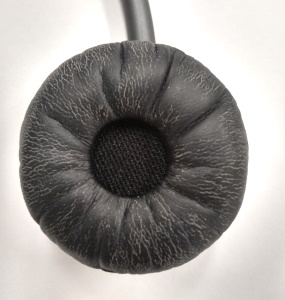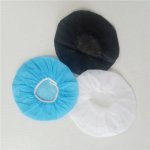
Most headset users know the long term ergonomic benefits of using a headset. But, do you know the important implications of good headset hygiene practices?
Several independent studies have documented the reduction of neck, back, and shoulder pain when users switch to telephone headset usage over traditional telephone handsets.
However, not many users know that headsets themselves must be maintained on a regular basis to avoid health and hygiene concerns in the workplace.
A study conducted by the University of Arizona concluded that telephones can be contaminated with up to 25,127 germs per square inch, and that telephones have 500 times more bacteria than the average toilet seat.
The population of germs and bacteria can include E.coli, Streptococcus, Salmonella & Staphyloccus aureus, all potentially dangerous and contagious organisms. The same bacteria can be found on telephone headset booms and ear cushions.
Hygiene is that branch of biology which designates the conditions upon which health depends and the means by which it may be sustained in all its virtue and purity.
Good hygiene is an aid to health, beauty, comfort, and social interactions. It directly aids in disease prevention and/or disease isolation.
Yes! The UK Health & Safety Executive advises "There may be an increased risk of infection because headsets are worn so intensively. The issue of headsets to individuals is strongly recommended. If sharing from a pool of headsets is unavoidable, then each call handler should be issued with their own personal foam ear pads and voice tubes." This advice is repeated by the Call Centre Workers Union.
Usage of headsets and headphones are growing at a phenomenal rate.
We are seeing more dentist's offering headphones to their customers, and hospitals are giving headphones to patients while having an MRI. Usually these are active noise cancelling headphones from brands such as Bose or Sony, which help block out the unwanted background noise.
We also see headphone sharing in the training and eductation sector. With multiple class changes a day, the number of people who have sweated into that same set of headphones is stomach turning.
These days in the Call Centre, we see less headset sharing. Which is probably due to better OH&S training. Plus wireless headsets allow for each person to have their own headset top, so only the headset base is shared.
 The number 1 cheapest thing you can do is, use disposable headphone covers.
The number 1 cheapest thing you can do is, use disposable headphone covers.
Available in multiple colours, and sizes to suit both large headphones, and smaller headsets. Disposable cover offer a cheap sterile layer of protection for headphone and headset users. Simply use a new cover each time a new user is given the headset/headphones. Your headset/headphone should also be wiped down regulary with an anti-bacterial wipe, for maximum cleanliness.
With the rise of COVID-19, we have been receiving many calls from concerned headset users. Disposable headset covers are a great solution for headsets that are used in a shared environment.
But what about the rest of the headset??
COVID-19 can last for for days on some surfaces. It is very important to remove any windscreens (microphone covers) from the microphone boom, to allow for a complete surface wipedown.
Foam windscreens (microphone covers) on the microphone boom can become a haven for germs, and though they can be washed with soap, they MUST be completely dry before going back over the microphone. You don't want to catch COVID-19, but your headset's microphone doesn't want to get wet or damaged.
The CDC states 70% isopropyl alcohol (IPA) is effective against the COVID-19 virus. In Australia, you can buy IPA wipes for cleaning headsets from: Communications Cleaning Services, BACS and Telephone Cleansing Australia
Our advice:
DO NOT use any disinfectant sprays directly on your headset, it could cause irreparable damage. Always use a cloth, there are many safe disposable IPA cloths available for use on telephones and headsets.
When ending a shift, the user should remove and throw away any used headset covers, and wipe down headsets with a disinfectant cloth.
At the start of a shift, the new user should put on their own disposable covers before use.
You should consider:
There are a number companies in Australia that specialize in telephone and headset cleaning, in no particular order: Communications Cleaning Services, BACS and Telephone Cleansing Australia
Wipes for cleaning headsets and telephones are usually 70% (IPA) isopropyl alcohol, as higher concentrations are no more effective. IPA is a great disinfectant, it kills bacteria, fungi and viruses. It also disolves oils and grease buildup, and dries fast without leaving any residue.
These tips are the bare minimum recommendations for safe and effective long term headset hygiene.
They should be used as a guide to maintain health and safety regulations in your company.
Not only will they assist in creating a safer workplace for your employees, but they will also promote greater longevity for your headsets and equipment.